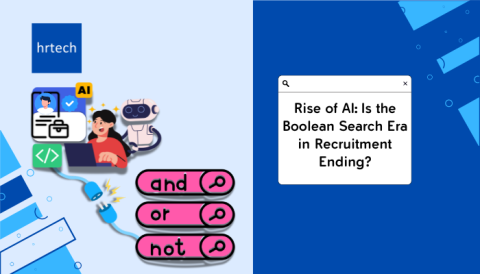According to MOM (Ministry of Manpower) report in June 2022, there are 247 thousand part time workers in Singapore. Of which, 45 thousand part time workers are either unable to find full time jobs or attribute that to the lack of education or training reasons.
by Macgyver Ng, Founder, Healthcare Career Groove

Almost everyone is familiar with the term “un-employment”. But do you know what is under-employment? According to MOM, it refers to a person working part-time but are willing and able to engage in additional work. But in principle, this can also refer to a person working in a role that they are overqualified for. E.g., A 20 years’ experience aerospace engineer with a bachelor’s degree working as a frontline temperature checker. Or a finance graduate with 8 years of experience working as a Grab driver. Or a homemaker that rejoined the workforce as a junior executive after spending 3 years taking care of her children.
According to MOM (Ministry of Manpower) report in June 2022, there are 247 thousand part time workers in Singapore. Of which, 45 thousand part time workers are either unable to find full time jobs or attribute that to the lack of education or training reasons. If we are to include full time employees who are presently working in roles that they overqualified for, the number of underemployed would probably number in hundreds of thousands, even in a small country like Singapore. This trend is widespread and can be seen in various global economies. Whether in US, China and India as well. In 2023, the under-employment rate in Singapore is projected to be 7.2%, which means that over 200,000 people will be working fewer hours than they would like, or in jobs that are below their skill level.
There are a number of factors that contribute to under-employment, including:
The changing nature of work: The rise of automation and artificial intelligence is leading to job losses in some sectors, while creating new jobs in others. This can lead to under-employment, as people who are displaced from their jobs may not have the skills or experience to find new jobs in the growing sectors. A good example is ChatGPT or Google Bard. This improves workers’ productivity at the expense of job loss.
Globalization: The increasing integration of the global economy means that businesses are now able to outsource work to countries with lower labour costs. This can lead to under-employment in countries with higher labour costs, as businesses move jobs overseas. Countries such as Philippines and India have emerged as global outsourcing centres for customer services and coding.
Skill mismatch: The skills gap between the skills that employers need and the skills that workers have is a major cause of under-employment. This gap can be caused by a number of factors, including:
Lack of investment in education and training: Governments and businesses need to invest in education and training to ensure that workers have the skills they need to succeed in the labour market. Singapore government has done an incredible job in this aspect. However, for countries with limited resources or budgetary deficit, this causes a major huddle for the local populace.
Rapid technological change: The pace of technological change is outpacing the ability of education and training systems to keep up. This can lead to a skills gap, as workers’ skills become outdated. A good example is China with its unemployed populace in the rural area.
Under-employment can have a number of negative consequences, including:
Reduced income: Underemployed workers typically earn less than they would if they were fully employed. This can lead to financial hardship and poverty.
Increased stress: Underemployed workers are more likely to experience stress, anxiety, and depression. This can have a negative impact on their physical and mental health, resulting in suicide. Studies by the University of Sydney has shown that unemployment and under-employment to be a significant driver of suicide.
Reduced social participation: Underemployed workers are less likely to participate in social activities, such as volunteering or joining clubs. This can lead to social isolation and loneliness.
There are a number of things that can be done to address under-employment, including:
Investing in education and training: Governments and businesses need to continuously invest in education and training to ensure that workers have the skills they need to succeed in the labour market.
Reducing the skills gap: Governments and businesses need to work together to reduce the skills gap, by providing training and education opportunities for workers.
Supporting entrepreneurship: Governments and businesses need to support entrepreneurship, as this can create new jobs and opportunities for underemployed workers. A good example is the Ministry of SMEs and Startups in Korea.
Under-employment is a complex issue, but there are a number of things that can be done to address it. By investing in education and training, promoting entrepreneurship, and reducing the skills gap, we can help to create a more inclusive and equitable labour market for all workers.
In addition to the above, here are some other things that can be done to address under-employment:
Encouraging businesses to offer flexible work arrangements: This can help to make it easier for underemployed or unemployed workers to find jobs that fit their needs.
Providing financial assistance to underemployed workers: This can help to reduce the financial hardship that under-employment can cause.
Supporting social programs that help underemployed workers: These programs can provide underemployed workers with the skills and support they need to find new jobs.
Under-employment is a serious problem, but it is one that can be addressed. By working together, we can create a more inclusive and equitable labour market for all workers. If you are thinking of joining a growing sector, you can explore healthcare jobs in Singapore? Healthcare Career Groove is a career portal for the healthcare industry.
About the Author:

Macgyver Ng is the founder of Healthcare Career Groove, the career portal for healthcare professionals. He is based in Singapore, enjoy hiking, backpacking and a believer in equitability.





